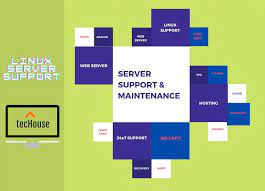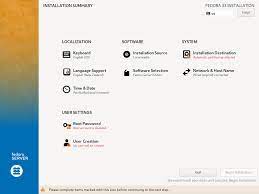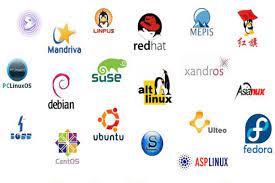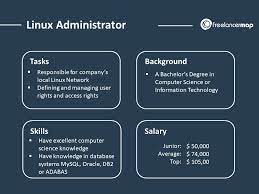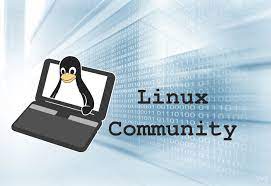Unleashing the Power of Linux: Exploring the Limitless Possibilities of the Linux OS
Linux OS: Empowering the World of Computing
In the vast realm of operating systems, Linux has emerged as a powerful and versatile option that has revolutionized the way we interact with technology. Developed by Linus Torvalds in 1991, Linux is an open-source operating system that has gained immense popularity and garnered a dedicated community of users worldwide.
What sets Linux apart from other operating systems is its core philosophy of openness and collaboration. Unlike proprietary systems, Linux allows users to access, modify, and distribute its source code freely. This ethos has fostered a vibrant ecosystem where developers, enthusiasts, and organizations come together to improve and innovate upon the system’s foundations.
One of the key strengths of Linux lies in its adaptability. With numerous distributions available, such as Ubuntu, Fedora, Debian, and CentOS, users can choose an interface that suits their needs and preferences. Whether you are a beginner or an advanced user, there is a Linux distribution tailored to your requirements.
Linux offers unparalleled stability and security. Due to its open-source nature, vulnerabilities are quickly identified and addressed by the community. Regular updates ensure that your system remains secure while benefiting from new features and improvements. Additionally, Linux’s robust architecture makes it less prone to crashes or slowdowns compared to other operating systems.
Flexibility is another hallmark of Linux. It supports a wide range of hardware configurations, making it an ideal choice for both personal computers and servers. From laptops to smartphones to embedded devices in Internet of Things (IoT) applications – Linux can be found powering various devices across different industries.
The command-line interface (CLI) is often associated with Linux but it also offers intuitive graphical user interfaces (GUI). This flexibility caters to different user preferences – whether you prefer the simplicity of point-and-click or the power and control offered by CLI commands.
Linux has become a powerhouse in server environments due to its reliability and scalability. It powers some of the world’s largest data centers, cloud platforms, and web servers. Its ability to handle heavy workloads and provide robust networking capabilities has made it the go-to choice for businesses seeking stability and cost-efficiency.
Moreover, Linux has become a breeding ground for innovation. The open-source nature of the system encourages developers to create and share their software freely. This has resulted in a vast repository of applications, ranging from office productivity suites to multimedia tools to development environments. The Linux ecosystem thrives on collaboration, ensuring that users have access to an extensive array of software options.
Linux is not just an operating system; it’s a community-driven movement that empowers users and encourages them to take control of their computing experience. The Linux community is known for its inclusivity, supportiveness, and willingness to share knowledge. Online forums, mailing lists, and chat channels provide a platform for users to seek assistance or collaborate on projects.
In conclusion, Linux OS stands as a testament to the power of open-source collaboration. Its flexibility, stability, security, and vast software ecosystem make it an attractive choice for individuals and organizations alike. Whether you are a hobbyist exploring the world of computing or an enterprise seeking reliable infrastructure solutions – Linux offers a gateway into a world where innovation knows no bounds.
Embrace the freedom and possibilities that Linux brings – join the ever-growing community today!
7 Frequently Asked Questions About Linux OS: Answered
- What is Linux?
- How do I install Linux?
- What are the advantages of using Linux?
- Which version of Linux should I use?
- How do I upgrade my Linux system?
- What software can I run on a Linux system?
- Is it easy to learn how to use Linux?
What is Linux?
Linux is an open-source operating system that serves as the foundation for a wide range of computing devices. It was initially developed by Linus Torvalds in 1991 and has since gained popularity and widespread adoption worldwide. Linux is known for its stability, security, flexibility, and versatility.
At its core, Linux is a kernel – the central component of an operating system that manages system resources and allows software applications to interact with hardware. However, when people refer to Linux, they often mean a complete operating system distribution that includes not only the Linux kernel but also various software packages and tools.
One of the defining characteristics of Linux is its open-source nature. This means that the source code of the operating system is freely available for anyone to view, modify, and distribute. This openness has fostered a large community of developers who continuously improve and enhance Linux.
Linux offers a wide range of distributions or “distros” that cater to different user needs and preferences. Each distribution typically includes a specific combination of software packages, desktop environments or window managers, and configuration options. Popular Linux distributions include Ubuntu, Fedora, Debian, CentOS, Arch Linux, and many more.
Linux provides users with a high level of customization and control over their computing experience. It supports various desktop environments like GNOME, KDE Plasma, Xfce, and Cinnamon, allowing users to choose their preferred interface style. Additionally, Linux offers both command-line interfaces (CLI) for advanced users who prefer text-based interaction and graphical user interfaces (GUI) for those who prefer point-and-click operations.
Due to its stability and security features, Linux has become widely adopted in server environments. It powers numerous web servers, cloud platforms like Amazon Web Services (AWS) and Google Cloud Platform (GCP), as well as enterprise data centers around the world.
Linux also supports a vast array of hardware architectures – from personal computers to servers to embedded systems found in devices like smartphones or IoT devices. Its versatility and adaptability have made Linux the operating system of choice for a wide range of computing applications.
In summary, Linux is an open-source operating system known for its stability, security, flexibility, and versatility. It empowers users with customization options and control over their computing experience. With its vast community of developers and wide range of distributions, Linux continues to evolve and thrive as a powerful alternative to proprietary operating systems.
How do I install Linux?
Installing Linux on your computer is a straightforward process that can vary slightly depending on the distribution you choose. Here is a general guide to help you get started:
Choose a Linux Distribution:
Research different Linux distributions and select one that suits your needs. Some popular options include Ubuntu, Fedora, Debian, and Linux Mint. Consider factors such as ease of use, community support, and available software packages.
Create Installation Media:
Download the ISO image file of your chosen Linux distribution from its official website. Burn the ISO file to a DVD or create a bootable USB drive using tools like Rufus (for Windows) or Etcher (for Windows, macOS, and Linux).
Backup Your Data:
Before proceeding with the installation, it’s always recommended to back up any important data on your computer to avoid accidental loss.
Configure Your Computer:
If you plan to install Linux alongside an existing operating system (dual-boot), ensure that your hard drive has enough free space for the new partition. If you intend to replace your current operating system entirely, skip this step.
Boot from Installation Media:
Insert the DVD or connect the bootable USB drive to your computer and restart it. Enter the BIOS/UEFI settings by pressing a specific key during startup (usually F2, F12, or Del). Change the boot order so that your computer boots from the installation media first.
Start the Installation Process:
Once you’ve successfully booted from the installation media, you’ll be presented with a graphical interface or command-line setup depending on your chosen distribution. Follow the on-screen instructions carefully.
Partitioning and Disk Setup:
During installation, you’ll be prompted to choose how you want to manage disk partitions. If you’re dual-booting with an existing OS, select the option to install alongside it. Alternatively, if you’re replacing an existing OS, choose the option to use the entire disk.
Configure Language, Time Zone, and User Account:
Set your preferred language, time zone, and create a user account with a password. These settings will be used for your Linux installation.
Install Boot Loader:
The boot loader (typically GRUB) allows you to choose which operating system to boot when you start your computer. It’s usually installed automatically during the installation process.
Complete the Installation:
Once all the necessary configurations are made, the installation process will commence. This may take some time depending on your hardware and distribution.
Restart Your Computer:
After the installation is complete, you’ll be prompted to restart your computer. Remove the installation media before restarting.
Explore Your New Linux System:
Upon rebooting, you’ll be greeted with a login screen. Enter your user credentials and enjoy exploring your newly installed Linux system.
Remember that these steps provide a general overview of the installation process. Specific distributions may have slight variations or additional steps. It’s always recommended to refer to the official documentation or community forums of your chosen Linux distribution for detailed instructions tailored to that specific distribution.
What are the advantages of using Linux?
Linux offers numerous advantages that have contributed to its widespread adoption and popularity among users. Here are some key advantages of using Linux:
- Open-source: Linux is an open-source operating system, which means its source code is freely available for anyone to access, modify, and distribute. This fosters a collaborative community where developers worldwide contribute to the system’s improvement, resulting in continuous updates, bug fixes, and security enhancements.
- Stability and Reliability: Linux is known for its stability and reliability. It has a robust architecture that can handle heavy workloads without experiencing crashes or slowdowns over time. This makes it an ideal choice for servers and critical systems where uptime is crucial.
- Security: Linux is renowned for its strong security features. With its open-source nature, vulnerabilities are quickly identified and patched by the community, making it less susceptible to malware attacks compared to proprietary operating systems.
- Customization: Linux offers a high level of customization, allowing users to tailor their operating system according to their specific needs and preferences. With numerous distributions available, users can choose one that suits their requirements in terms of interface design, software packages, and system resources.
- Flexibility: Linux supports a wide range of hardware architectures, making it compatible with various devices such as desktops, laptops, servers, smartphones, embedded systems, and even supercomputers. This flexibility enables Linux to be used across different industries and applications.
- Vast Software Ecosystem: The Linux ecosystem boasts a vast repository of free and open-source software applications that cover almost every imaginable need – from office productivity tools to multimedia software to development environments. Users have access to a rich selection of software options without the need for costly licenses.
- Cost-effective: Linux is cost-effective as it eliminates the need for expensive software licenses typically associated with proprietary operating systems like Windows or macOS. Users can freely install Linux on multiple machines without worrying about licensing fees, reducing the overall cost of ownership.
- Community and Support: The Linux community is known for its inclusivity, supportiveness, and willingness to share knowledge. Online forums, mailing lists, and chat channels provide a platform for users to seek assistance, share experiences, and collaborate on projects.
- Performance: Linux is designed to be efficient and optimized for performance. It utilizes system resources effectively, allowing users to achieve better performance even on older or less powerful hardware configurations.
- Education and Learning: Linux provides an excellent platform for learning about operating systems, programming languages, and computer systems in general. Its open nature encourages exploration and experimentation, making it a popular choice in educational institutions and for individuals interested in expanding their technical skills.
These advantages make Linux a compelling choice for individuals, businesses, educational institutions, and organizations seeking a flexible, reliable, secure, and cost-effective operating system that empowers users to take control of their computing experience.
Which version of Linux should I use?
Choosing the right version of Linux depends on your specific needs, preferences, and level of experience. With a wide range of distributions available, each with its own strengths and focus areas, it’s important to consider a few factors before making a decision.
- User-Friendliness: If you are new to Linux or prefer a user-friendly experience similar to that of Windows or macOS, distributions like Ubuntu or Linux Mint are popular choices. They offer intuitive interfaces and come bundled with essential software packages, making them ideal for beginners.
- Hardware Compatibility: Consider the hardware you plan to use with Linux. Some distributions may have better support for certain hardware configurations than others. For example, if you have older hardware or require extensive driver support, distributions like Debian or Fedora might be worth considering.
- Purpose: Determine the primary purpose for using Linux. Are you looking for a general-purpose distribution for everyday tasks? Or do you have specific requirements such as multimedia production, gaming, or server administration? Different distributions cater to different needs. For multimedia production, consider Ubuntu Studio; for gaming, check out SteamOS; and for server administration, CentOS or Ubuntu Server might be suitable options.
- Community Support: The strength of community support can greatly impact your experience with Linux. Larger communities often provide more resources and assistance when encountering issues. Ubuntu has an extensive community support base and is known for its helpful forums and documentation.
- Customizability: If you enjoy customizing your operating system to suit your preferences and requirements, distributions like Arch Linux or Gentoo offer more hands-on experiences but require advanced technical knowledge.
Remember that these are just general guidelines, and there are many other distributions available that may better align with your specific needs. It’s always recommended to try out different distributions by creating live USBs or virtual machines before committing to one particular version.
Ultimately, the choice of which version of Linux to use is a personal one based on your unique requirements. Explore the various options, read user reviews, and consider seeking advice from the Linux community to find the distribution that best fits your needs and goals.
How do I upgrade my Linux system?
Upgrading your Linux system can be done through a few different methods, depending on the distribution you are using. Here are some general steps that can guide you through the process:
Backup Your Data: Before proceeding with any system upgrade, it is always recommended to back up your important files and data to prevent any potential loss or corruption.
Update Existing Packages: Start by updating your current packages and repositories to ensure that you have the latest versions available. Open a terminal and run the following commands:
For Debian-based distributions (e.g., Ubuntu):
“`
sudo apt update
sudo apt upgrade
“`
For Red Hat-based distributions (e.g., Fedora):
“`
sudo dnf update
“`
Understand Upgrade Options: Different Linux distributions have different upgrade methods. Some distributions provide a specific tool or command for upgrading, while others may require a fresh installation of the new version.
Distribution-Specific Upgrade Methods:
– Ubuntu: If you are using Ubuntu, you can upgrade to a newer release using the “do-release-upgrade” command in the terminal:
“`
sudo do-release-upgrade
“`
– Fedora: For Fedora users, upgrading to a new version can be done with the “dnf system-upgrade” command:
“`
sudo dnf system-upgrade
“`
– Arch Linux: Arch Linux follows a rolling release model, which means there is no need for major upgrades. Regular system updates keep your system up-to-date.
Follow Instructions: During the upgrade process, carefully follow any prompts or instructions provided by your distribution’s upgrade tool or documentation. These instructions may include confirming package changes, resolving conflicts, or selecting additional options.
Reboot Your System: After completing the upgrade process, it is recommended to reboot your system to ensure that all changes take effect properly.
Remember that upgrading your system may take some time, depending on the size of the upgrade and your internet connection speed. Patience is key during this process.
It’s worth noting that the specific steps and commands may vary depending on your Linux distribution and version. Therefore, it is always recommended to consult your distribution’s official documentation or community forums for detailed instructions tailored to your specific setup.
What software can I run on a Linux system?
Linux offers a vast array of software options across various categories, catering to a wide range of user needs. Here are some popular software categories and examples of applications that you can run on a Linux system:
- Office Productivity: LibreOffice, Apache OpenOffice, OnlyOffice, G Suite (web-based).
- Web Browsers: Mozilla Firefox, Google Chrome, Chromium, Opera.
- Multimedia: VLC Media Player, GNOME Videos (formerly Totem), Audacity (audio editor), Kdenlive (video editor), Shotwell (photo manager).
- Graphics and Design: GIMP (GNU Image Manipulation Program), Inkscape (vector graphics editor), Blender (3D modeling and animation).
- Development Tools: Visual Studio Code, Eclipse IDE, Atom, Sublime Text, Git.
- Communication and Collaboration: Mozilla Thunderbird (email client), Evolution Mail (groupware suite), Slack (team collaboration platform), Zoom (video conferencing).
- Virtualization and Containerization: VirtualBox, VMware Workstation Player, Docker.
- Gaming: Steam for Linux offers a growing library of games specifically developed for Linux systems.
- Security and Privacy: Wireshark (network protocol analyzer), ClamAV (antivirus software), VeraCrypt (disk encryption).
- System Utilities: GParted (partition editor), Timeshift (system backup tool), BleachBit (system cleaner).
These are just a few examples from each category; there are many more applications available for Linux systems through official repositories or third-party sources. Additionally, Linux supports running command-line tools and scripting languages like Python or Bash for automation or specialized tasks.
It’s worth noting that specific software availability may vary depending on the Linux distribution you are using. However, most popular distributions provide extensive software repositories where you can discover and install applications easily using package managers like APT or DNF.
Linux’s open-source nature also allows for customization and the ability to build and install software from source code, providing even more flexibility in terms of software options.
Is it easy to learn how to use Linux?
Learning to use Linux can be a rewarding experience, but it does require some effort and dedication. While the initial learning curve may seem steep for those who are accustomed to other operating systems, with the right resources and mindset, Linux can become accessible to users of all skill levels.
Here are a few factors that can influence the ease of learning Linux:
- Prior Experience: If you have prior experience with command-line interfaces or have worked with other Unix-like systems, such as macOS or BSD, you may find it easier to adapt to Linux. Familiarity with basic terminal commands and concepts will provide a solid foundation for learning Linux.
- Distribution Choice: The choice of Linux distribution can impact the learning process. Some distributions, like Ubuntu and Linux Mint, focus on user-friendliness and provide intuitive graphical interfaces that resemble traditional operating systems. These distributions often come bundled with user-friendly software installation tools and comprehensive documentation, making them ideal for beginners.
- Learning Resources: The availability of learning resources greatly influences the ease of acquiring Linux skills. There are numerous online tutorials, forums, documentation wikis, and video courses dedicated to teaching Linux concepts and usage. These resources cater to different skill levels, from beginner-friendly guides to advanced system administration topics.
- Mindset and Persistence: Like any new skill, learning Linux requires patience and persistence. Embracing a curious mindset and being open to experimentation will help in understanding how different components of the system interact with each other. It’s essential to approach Linux as a continuous learning journey rather than expecting immediate mastery.
- Community Support: The vibrant community surrounding Linux is known for its willingness to help newcomers. Online forums, chat channels, mailing lists, and social media groups provide platforms where users can seek assistance or discuss their queries. Engaging with the community can enhance the learning experience by gaining insights from experienced users.
While there may be challenges initially when starting out with Linux due to its different approach compared to other operating systems, the learning process can be an enjoyable and empowering one. As you gain familiarity with Linux, you’ll discover its flexibility, customization options, and vast range of software that can cater to your specific needs.
Remember, learning Linux is not a race but a personal journey. Take it step by step, focus on understanding the core concepts, practice regularly, and don’t hesitate to seek help from the community. With time and effort, you can become proficient in using Linux and unlock its potential as a powerful tool in your computing arsenal.




